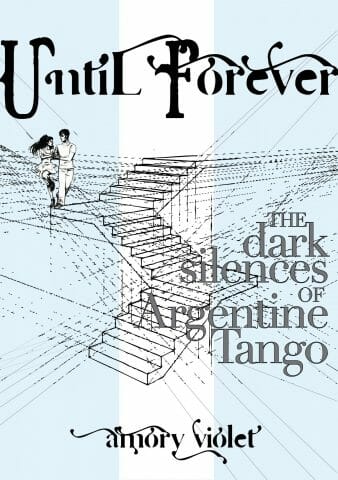I have forbidden myself from using the word “authenticity”. I don’t give “that’s the way it’s done” as an explanation, and I don’t let myself say “how it is in Buenos Aires”. Don’t get me wrong, I love Buenos Aires and dancing there. I am incredibly nostalgic for the rituals and quirks that define my life in that beautiful city. And I always honor and give credit when it’s possible to do so. But what I see is that these explanations don’t serve my goals as a teacher and dancer – to empower my students and make tango culturally relevant.
First of all, these claims are a trump card. Most students are in no position to dispute or engage these claims, so they amount to a way of making an unchallengeable assertion, without actually providing a logic that the students can make their own.
I think it was Neitzsche who abhored the use of arbitrary and abstract moral claims with children because it simply disempowered them. It’s a power move. The alternative is to invite the child to principle based on affections. Insted of “it’s wrong to pound nails into the piano” one should say “I love my piano so please don’t pound nails into it.”
- “Followers should not ask leaders to dance.” I agree.
- “Use the cabeceo.” I agree.
- “Don’t teach in the milonga.” I disagree. Most of us really need to practice and learn a lot more, and if we’re spending our time in the milonga instead of classes and practicas (Sydney has hardly any practicas anyway), when is that going to happen? I can get on a high-horse and say people should spend more time and money in classes, but the reality is here we are in the milonga and we’re not dancing very well. I feel that I”m withholding when I could help my partner and I don’t. And the result also, especially as leader, is that I don’t enjoy the dance and therefore avoid dancing with new people with whom I’m not already in dialogue. So I tend to dance only with my own students or people I’ve had the chance to work with in practica. I don’t like this result.
- “If you dance three tandas with the same person it means you’re going to have sex with them.” Um, yes. We might not want to take all this “authenticity” quite so seriously…
Assertions of authenticity are often used for outright bigotry.
- Women shouldn’t lead, it’ll ruin their following.
- Women shouldn’t have pre-marital sex, it’ll ruin them.
- Real Argentine tango is close embrace.
- Real Americans are white and speak English.
- Real lesbians have short hair.
- Real men don’t cry.
Claims about how “it is” insist that any other way is beyond contempt. These are attempts to keep control, in the face of anything new, and, almost always, when confronted with the power of youth.
There’s a hot little area of social science these days which is asking critical questions about the economic and cultural effects of tourism. One of the themes is these studies is the invocation of authenticity. Tourists hungry for it are invading sacred places and ceremonies. “Natives” desperate for foreign exchange are inventing it.
The conversations happening in native communities themselves are not about authenticity. They are about whether specific cultural changes are good or not. “Tradition” in and of itself is valued, as tradition, but nothing the tribe can do, no matter how new, is inauthentic. Authenticity is a term that only exists in the minds of the outsiders.
Any Porteño knows that tango is a living art and that everything happens in Buenos Aires milongas. They change, they cycle, they are an open space in which people express the old, the new, their individuality, their desires, their frustrations, and their art. A friend once returned from a traditional BsAs milonga to report to me that a man had performed as a leader in drag including stiletto heels. Tango can be very serious and Porteños are proud, but they know cultural fusion, they live complexity and contradiction, and they are not humorless. Humorless self-righteousness is something that converts tend to do, not natives.
Tango in Buenos Aires includes the annual Festival Cambalache of tango art, which encourages every possible expression of tango. The 2010 Festival Misterio included tangos from traditional masters and a samba (the very serious and romantic Argentine folk dance) performed by two openly gay men which brought the entire room to tears of recognition that the emotions of tango far outstrip — well, everything.
I don’t think any Argentine Tango dancer anywhere in the world wants to contemplate a tango that is not a living art. I believe that tango dancers want to be artists, not relics faithfully reenacting an ancient ritual irrelevant to the living world. We want to experience this dance ever more deeply and richly, for a lifetime.
We want tango to continue to attract new dancers, all over the world, to sustain and enrich this culture that we enjoy. In order for modern and postmodern people from all nations to recognize themselves in it, we will need to let tango out of its clichés, we will need to allow it to express itself in new colors, with new musics, in new shoes.
A few months ago, some Argentines in my foreign city showed me a draft poster advertising “A Real Milonga”. I explained to them, in my crappy Castellano, that this phrase was a bit of a slap to the other (non-Argentine) milonga organizers, who had been doing their best and had succeeded in building a vibrant Argentine Tango community in this hinterland. Then I remembered that the word “verdad” doesn’t translate to “authentic”. It means something more like “soulful”.














